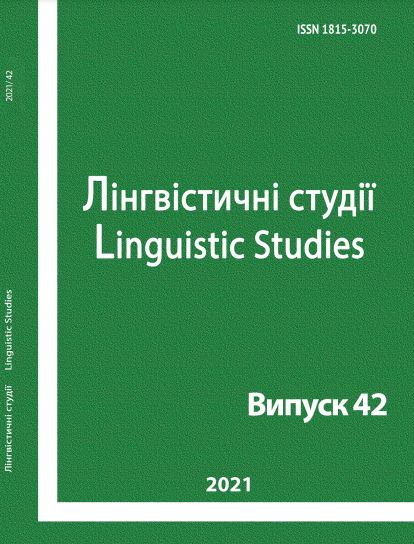Sociolinguistic analysis of Italian Internet Covid -19 humour
DOI:
https://doi.org/10.31558/1815-3070.2021.42.10Klíčová slova:
jokes; COVID 19; verbal humour; linguistic humour; irony; pun; self denigrating humour; allusionAbstrakt
The article deals with Italian Internet humour related COVID-19. Language has always been the main way to react to all the processes in society. Jokes appear as the reaction, externalization of human thoughts and conceptualization. The research gives us important data on psychology, sociology, culturology, anthropology of the determined society and offers an opportunity to understand the semantic phenomena and the cognitive processes involved in producing jokes.
Reference
Abdalian A. Why's That funny? An extension to the Semantic Script Theory of Humor / Andrew Abdalian. Swarthmore College. Dept. of Linguistics. 2006. URL: http://hdl.handle.net/10066/ 10213 (17.09.2021).
Attardo S. “Script theory revis(it)ed: joke similarity and joke representation model”. Humor: International Journal of Humor Research, 4, 1991: 293–347.
Cose che noi umani. 24 ore. URL: https://lab24.ilsole24ore.com/storia-coronavirus (17.09.2021).
Dynel M. “Beyond a Joke: Types of Conversational humor”. Language and Linguistics Compass, 3, 2009: 1284–1299.
Pierini D. Una risata al giorno: i meme della quarantena [Parole nel turbine vasto], 2020. URL: https://www.treccani.it/magazine/lingua_italiana/articoli/parole/parole_nel_turbine_5.html (17.09.2021).
Raskin V. Semantic Script Theory of humour. Dordrecht: D. Reidel Publishing Company, 1985.
Shade R. License to laugh: Humor in the Classroom – Westport: Greenwood Publishing, 1996.
Umorismo virale ai tempi del coronavirus, 2020. URL: http://www.iusspavia.it/-/umorismovirale-ai-tempi-del-coronavirus (17.09.2021).


